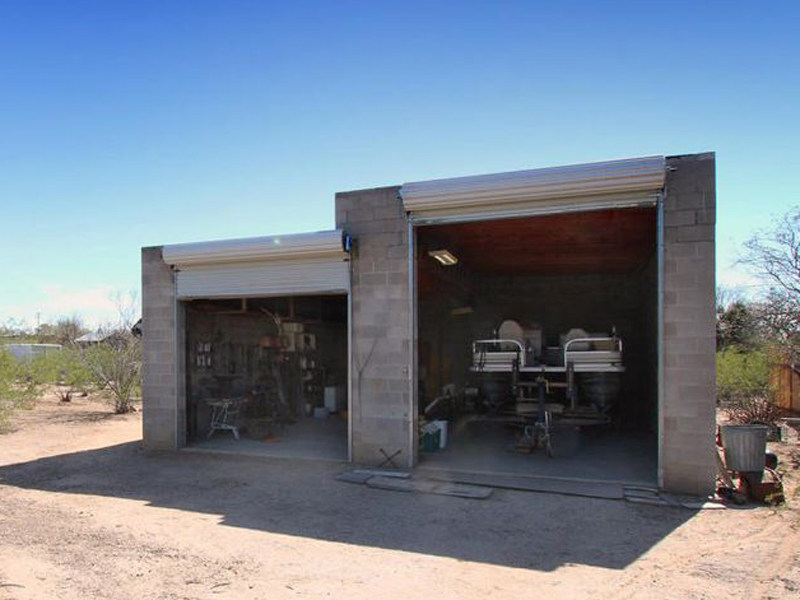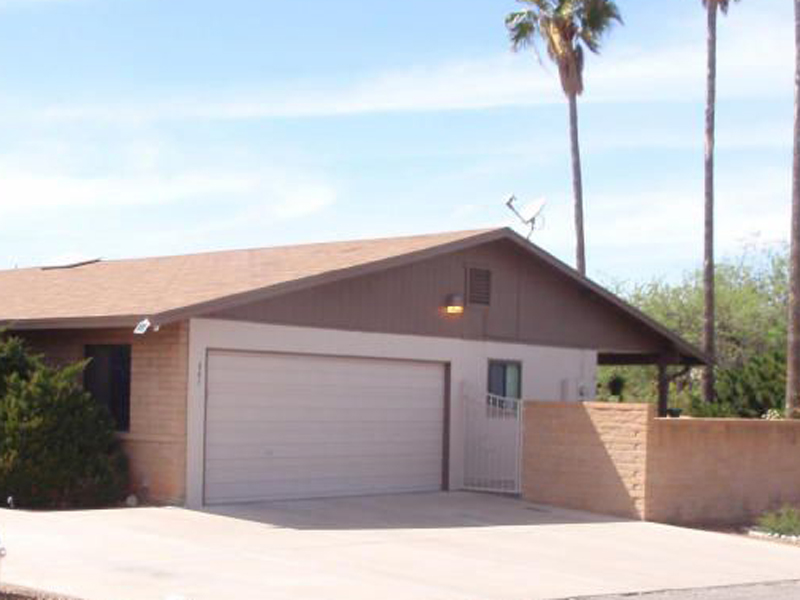Is Your Garage Door Stuck? Below's What to Do Very first
When your garage door won't open up, begin with these crucial security checks before trying any type of repair work. Initially, guarantee nobody is standing near the door which cars are clear of the opening. Seek apparent indicators of damage like broken panels, bent tracks, or hanging cable televisions. If you see a snapped spring or severely harmed parts, quit promptly and call a professional—-- these fixings call for customized devices and knowledge to deal with safely.

Check These 6 Points Before Calling a Specialist
Prior to thinking you need expensive repair services, go through this fast diagnostic list that addresses most garage door troubles:
-
Source of power: Verify the opener is connected in and the outlet is functioning
-
Remote batteries: Replace dead batteries in your push-button control
-
Hand-operated lock: Inspect if somebody unintentionally engaged the hands-on lock
-
Blockages: Look for debris obstructing the door's path or sensors
-
Emergency launch: Make certain the red emergency situation cable hasn't been pulled
-
Circuit breaker: Verify the garage circuit hasn't stumbled
These simple checks settle approximately 70% of garage door issues without calling for expert intervention.
10 Common Factors Your Garage Door Won't Open Up
Understanding why your garage door opener isn't functioning aids you pick the right remedy. Here are the most constant reasons property owners encounter:
Dead remote batteries represent the simplest fix—-- when batteries die, the remote can't send signals to the opener. Power interruptions or stumbled breakers cut electrical energy to the motor. Busted springtimes stop the door from raising effectively and require instant expert interest. Sensor imbalance reasons safety systems to obstruct door operation. Track obstructions quit rollers from moving smoothly. Motor overload triggers automatic shutoffs when the opener discovers resistance. Limit switch problems confuse the opener about door setting. Cable television damage interferes with the training system. Weather-related concerns influence door motion during extreme temperature levels. Element wear from age slowly minimizes system performance.
Problem # 1: Dead Remote Batteries
When your wall surface switch functions however your remote doesn't, dead batteries are typically the offender. Many garage door remotes utilize either 3-volt lithium or 12-volt alkaline batteries. Get rid of the back cover of your remote and check the battery kind. Change with fresh batteries and check the remote. If it still does not function, you may need to reprogram it to your opener. Consult your opener's manual for details reprogramming guidelines, as the process differs by supplier.
Issue # 2: Power Supply Issues
Garage door power troubles usually originate from loose links or stumbled circuits. Check that the opener is strongly linked into its outlet—-- resonance can loosen links over time. Examine the outlet with an additional tool to confirm it's functioning. Analyze your home's breaker box for tripped circuits, specifically if you've experienced tornados or power fluctuations. GFCI outlets might have tripped and require resetting. If the opener has power yet won't react, the concern likely lies somewhere else in the system.
Trouble # 3: Broken or Damaged Springs
Busted garage door springtimes are amongst one of the most harmful parts to handle. If you listen to a loud bang from your garage or observe the door really feels incredibly hefty when trying to lift by hand, a spring has actually most likely broken. Torsion springtimes run horizontally over the door, while expansion springtimes rest on either side. Never attempt spring repair work on your own—-- these parts keep tremendous stress that can create severe injury or fatality. Expert substitute usually costs $150-$300 but ensures your safety and security.
Issue # 4: Blocked Security Sensing Units
Modern garage doors feature safety and security sensors that prevent closure when objects are discovered. These sensors can stop the door from opening up if they're filthy, misaligned, or obstructed by particles. Clean sensor lenses with a soft towel and make certain absolutely nothing blocks the invisible light beam in between them. Examine that sensing units are correctly aligned—-- a lot of have indicator lights that reveal link status. Sensor issues frequently resolve with straightforward cleansing and adjustment.
Problem # 5: Track Obstructions or Damage
Garage door tracks overview rollers as the door goes up and down. Dirt, particles, old oil, or tiny items can jam the system. Check tracks visually and get rid of any kind of obstructions with a brush or cloth. Look for damages, bends, or bending that could impede smooth procedure. Small track changes are feasible for helpful property owners, yet substantial damage requires expert repair work to avoid additional issues or safety and security hazards.
Issue # 6: Garage Door Opener Motor Issues
When the garage door electric motor runs but the door doesn't move, numerous concerns could be responsible. The electric motor might be overwhelmed and turning off as a safety measure. Equipment wear, specifically in older units, can protect against proper procedure. Chain or belt drive problems impact power transmission. If you hear unusual grinding, clicking, or humming noises, stop using the opener quickly. Electric motor repairs often set you back greater than substitute, particularly for units over ten years old.
Step-by-Step Do It Yourself Troubleshooting Guide
Follow this organized approach to garage door repairing while prioritizing safety throughout the procedure:
Action 1: Test the wall surface switch first. If it works however the remote doesn't, focus on remote problems. seasonal garage door maintenance checklist If neither jobs, check power supply.
Step 2: Examine the hand-operated launch cable. If it's been drawn, the opener is disengaged from the door. Press the cart back to reconnect.
Step 3: Manually test the door by disengaging the opener and trying to raise the door by hand. It must move smoothly and remain in place when half-open.
Step 4: Evaluate noticeable components for damage, paying unique interest to springs, wires, and tracks.
Step 5: Inspect all safety attributes including sensing units, limitation switches, and auto-reverse features.
Step 6: Test various controls (remote, wall surface button, keypad) to isolate the issue source.
Constantly use shatterproof glass and work handwear covers when doing examinations, and never effort repairs on springtimes or high-tension elements.
When to Call a Professional vs. do it yourself Solutions

Understanding when to call a garage door expert versus trying do it yourself repairs shields both your security and your wallet. Manage these problems on your own: dead remote batteries, power supply troubles, small track cleansing, sensor cleaning and alignment, and basic lubrication.
Never try these repair services yourself: spring replacement or change, wire fixings, major track adjustment, electrical wiring issues, opener electric motor replacement, or any type of repair work including high-tension parts. Specialist technicians have specialized devices, training, and insurance to handle hazardous repair services safely.
Consider repair costs versus substitute prices, particularly for doors over 15 years old. Modern garage doors offer far better safety functions, energy effectiveness, and integrity than older designs.
Emergency Garage Door Solutions
When you're stuck to a garage door that will not open and need immediate access, follow these emergency procedures:
Handbook Procedure: Draw the red emergency launch cable to disengage the opener. This enables hands-on operation but requires proper technique to stay clear of injury. Lift the door gradually and equally, utilizing leg muscles as opposed to your back. Many residential doors weigh 100-150 extra pounds, making them workable for many grownups.
Momentary Fixes: If the door opens up by hand but will not keep up, prop it open with sawhorses or clamps—-- never ever use your body or automobiles as supports. For doors that won't shut entirely, guarantee the opening is protected if you need to leave.
Emergency Service: Many garage door firms use 24/7 emergency situation service for situations entailing protection problems, trapped lorries, or complete system failings. While much more expensive than regular service phone calls, emergency repairs give instant remedies when needed most.
Security Warning: What NOT to Do
Garage door security requires recognizing dangerous repair services that need to never be attempted by home owners:
Never try to repair springtimes—-- they keep enough power to cause fatal injuries when they break or are incorrectly dealt with. Do not require a stuck door—-- this can harm the opener, tracks, or door panels, producing extra pricey issues. Avoid bypassing safety features—-- sensors and auto-reverse devices stop serious injuries and residential or commercial property damages.
Don't ignore odd noises—-- grinding, scraping, or banging sounds suggest problems that get worse in time. Never use the door if cords are frayed or damaged—-- the door can drop unexpectedly. Do not attempt electrical repairs unless you're a qualified electrical contractor—-- garage door openers utilize both 120V household current and low-voltage control circuits.

Precautionary Maintenance to Prevent Future Problems
Normal garage door upkeep avoids most typical troubles and prolongs system life-span substantially:
Regular monthly Tasks: Aesthetic assessment of all parts, checking auto-reverse safety features, inspecting and tightening equipment, and cleaning tracks and sensors.
Quarterly Jobs: Lubricating all moving parts with appropriate garage door lube, screening manual procedure, and examining weather condition securing.
Yearly Tasks: Specialist inspection and tune-up, springtime change if required, and opener upkeep consisting of belt or chain adjustment.
Seasonal Tasks: Planning for weather extremes, inspecting insulation, and adjusting opener settings for temperature changes.
Constant upkeep costs far less than emergency situation repair services and guarantees dependable procedure year-round.
Garage Door Will Not Open Up Frequently Asked Questions
Why won't my garage door open with the remote however collaborates with the wall surface button?
This normally indicates dead remote batteries, signal interference, or the demand to reprogram the remote. Inspect batteries first, then consult your opener guidebook for reprogramming instructions.
Can I manually open my garage door if the power is out?
Yes, pull the red emergency situation release cable to disengage the opener, after that lift the door manually. Be prepared for the door's complete weight and lift with appropriate strategy to prevent injury.
How do I understand if my garage door springtime is broken?
Signs consist of a loud bang from the garage, the door feeling very hefty when raising manually, visible spaces in the springtime coils, or the door only opening a couple of inches before quiting.
Is it risk-free to utilize my garage door if it will not open up right?
No, partial procedure suggests mechanical problems that might worsen all of a sudden. Quit using the door and have it checked by a professional to prevent additional damage or injury.
What should I do if my garage door opens up but won't close?
Check security sensing units for obstructions or imbalance, analyze the tracks for debris, and examine the auto-reverse feature. If these do not solve the trouble, seek advice from a specialist.
Just how much does it cost to deal with a garage door that will not open?
Expenses differ widely relying on the problem: battery substitute ($5-$10), expert medical diagnosis ($50-$100), springtime substitute ($150-$300), or opener replacement ($200-$500).
Can weather impact my garage door's capability to open up?
Yes, extreme cold can enlarge lubricants and impact steel components, while warm can create growth issues. A lot of issues settle as temperatures normalize, yet persistent problems may need expert attention.
Why does my garage door open up a few inches after that stop?
This usually suggests damaged springs, limit switch issues, or track obstructions. The opener's safety and security functions quit operation when resistance is found, stopping damages to the motor or door.
Obtain Specialist Assist for Facility Concerns
When DIY repairing doesn't solve your garage door troubles, professional technicians offer the competence and tools needed for risk-free, enduring repairs. Certified specialists diagnose problems properly, utilize manufacturer-approved components, and supply service warranties on their job.
Expert services include: thorough system evaluations, spring and wire replacement, opener repair work and replacement, track alignment and substitute, electrical troubleshooting, and emergency service calls.
What to expect: in advance prices, certified and insured service technicians, same-day service for lots of fixings, and follow-up upkeep recommendations.
Most garage door firms provide totally free price quotes for major repair work and can offer immediate services for urgent issues impacting home protection or automobile access.
Getting Your Garage Door Working Again
A garage door that will not open up does not have to wreck your day or break your spending plan. Beginning with basic troubleshooting actions like checking power, replacing batteries, and analyzing for noticeable blockages. Numerous troubles have quick do it yourself remedies that recover regular procedure within minutes.
However, acknowledge when professional help is needed—-- specifically for spring-related concerns, electrical troubles, or complex mechanical failings. Trying unsafe repair services on your own takes the chance of serious injury and commonly creates more pricey problems.
Regular upkeep prevents most garage door issues and ensures dependable procedure for several years to come. When issues do occur, address them quickly to prevent more costly repair work and preserve your home's safety and comfort. Whether you need a simple battery substitute or full system overhaul, services exist to get your garage door functioning smoothly once more.